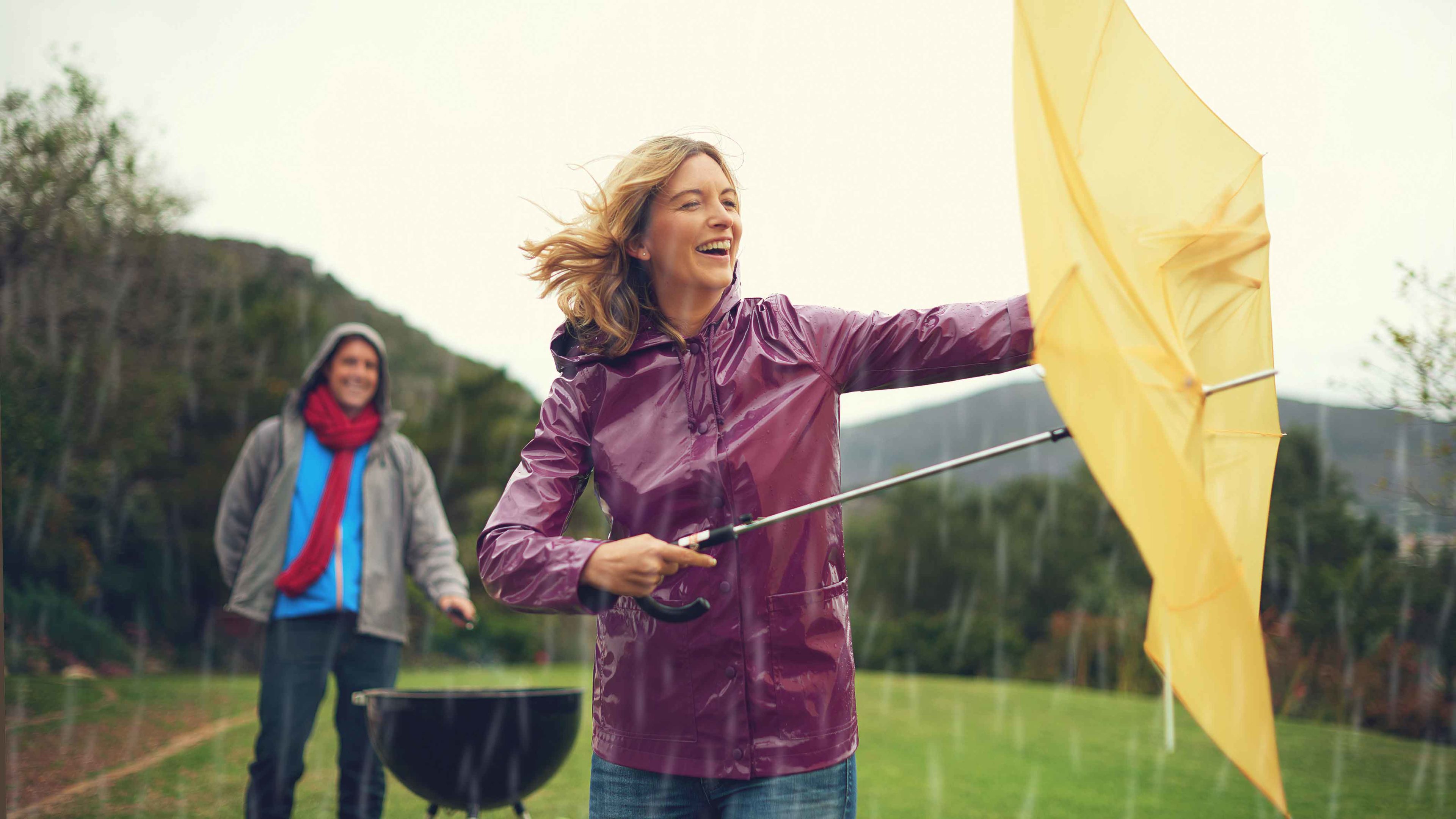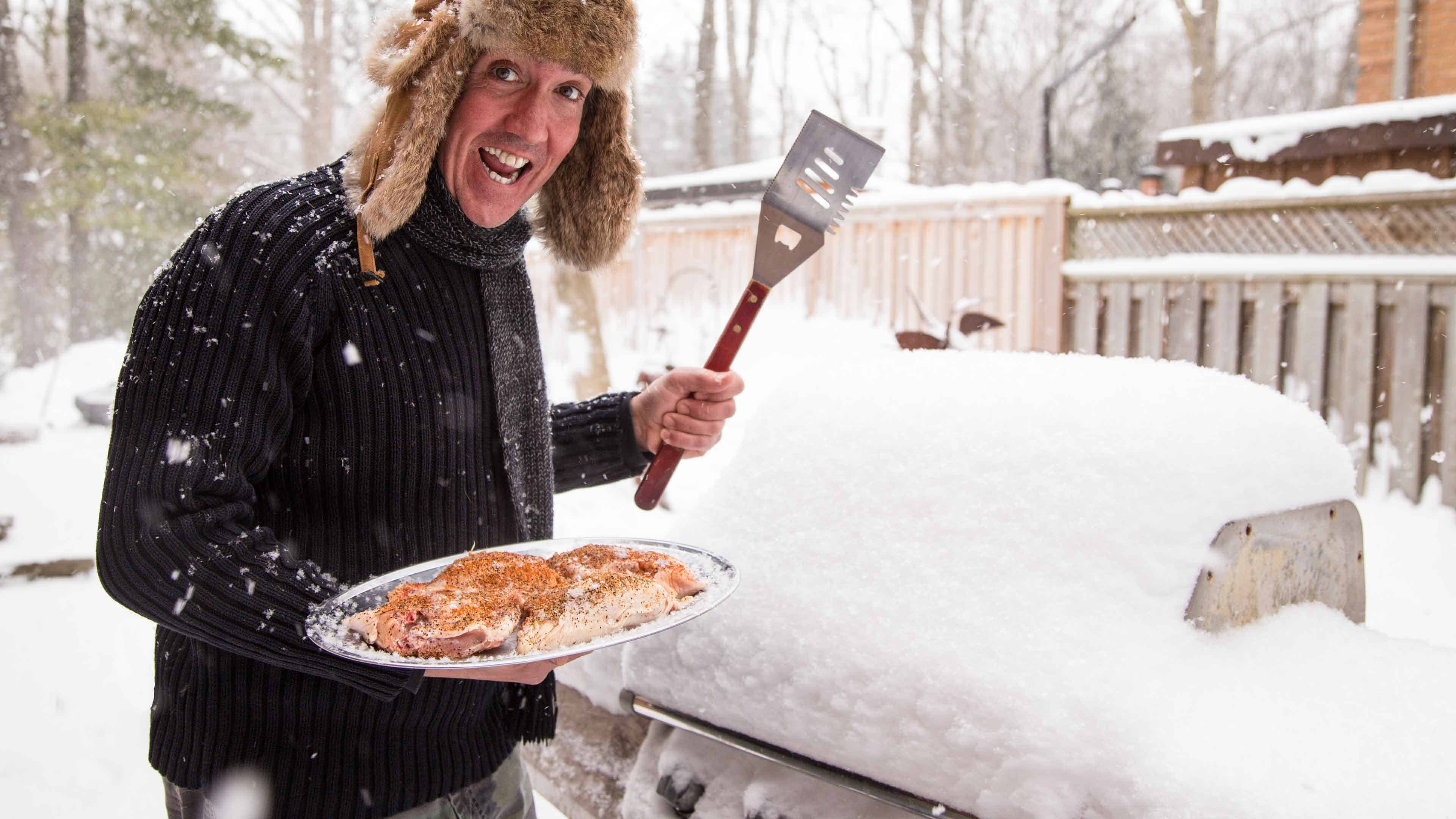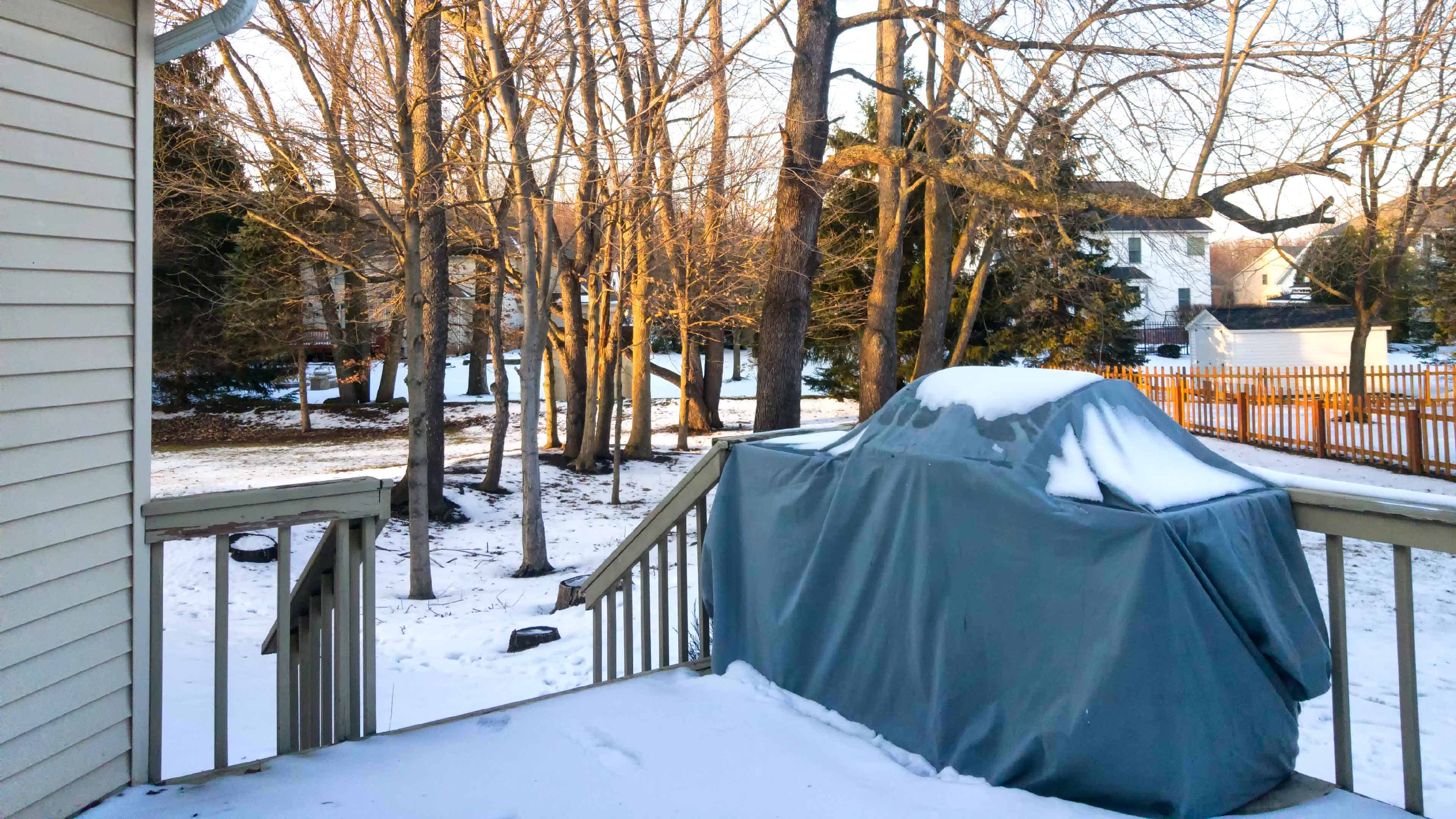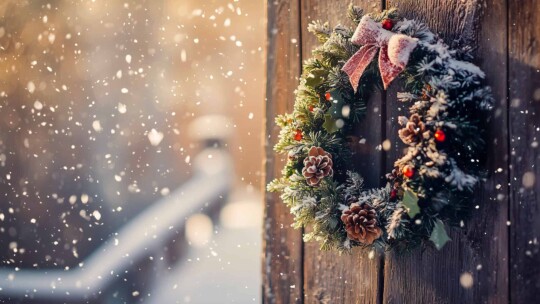As shorter days and cold, windy evenings set in, you might be contemplating retiring your outdoor grill until spring. Well, we’re here to tell you that doesn’t have to be the case. With a little planning and preparation, you can enjoy grilling in any weather. Whether faced with rain, wind or snow, turn to these winter BBQ grilling tips—then keep turning up the heat on your backyard cooking.

Grilling in the Rain
It might seem counterintuitive to grill in the rain, but there’s plenty you can do to stay dry while doing so. First, think coverage. For starters, a properly anchored patio umbrella is an inexpensive solution. Or, you can purchase or build a BBQ canopy. If you really want to go all in, consider a retractable awning or permanent, covered grilling station. While the latter two options are more expensive, the upside is both can increase your property value—and your grilling experience.
Grilling in the Wind
Attempting to grill burgers during gusty weather is an unpleasant—and usually futile—experience. So, if you’re trying to grill in the wind, create a windbreak to provide the needed protection. Setting up a basic wall or wind block is a simple DIY project—all you’ll need is a sheet of plywood (or similar material) to act as a windbreak. Just make sure it’s stable enough to not endanger your grill, or anyone near it.

Grilling in the Snow
Don’t let a few flurries—or even a few inches of powder—keep you from firing up the grill. First, just find a safe spot to grill in, avoiding garages or other enclosed spaces. If your grill’s outside, clear it of snow and check for a frozen lid before further inspecting it. (Lids and other components can be warmed by bringing your grill inside a heated space, or even with a hair dryer.)
Charcoal Grilling vs. Gas Grilling in Winter
We all have our preferences when it comes to the grill, but it becomes a whole different ballgame when the temperatures drop.
While it might not be any harder to light your charcoal in the winter, it’s certainly going to take longer to warm your grill up. This means you’ll need extra fuel—and you’ll need to be prepared to spend extra time outdoors with your grill as it heats. The longer you’re able to avoid peeking and keep your grill covered, the quicker it’s going to cook.
Likewise, grilling with gas means you commit to being in the chill for a bit. Like with coal, gas does require a bit of warming time so your grill gets up to the correct temp—and you might need a little extra fuel in case the heating takes longer than expected.
Grill Position
Before even pressing the ignitor, first assess wind direction and then position your grill accordingly. Turn any vents away from the grill and ensure to position it at least 10 feet from any structure or flammable objects. Once lit, always lift the lid carefully so heat and/or food aren’t lost during a gust.
Maintaining Grill Temperature
When cold-weather grilling, make sure you’re mindful of heat loss during windy or rainy conditions. If using a charcoal grill, plan on having extra charcoal—and, getting an early start—to maintain its temperature. With gas grills, their burners can often be blown out by strong winds. Should this occur, simply turn off the gas and open the lid before relighting.
Insulating Your Grill
Another important cold-weather grilling tip involves using insulation to more permanently and reliably protect your grill. Because snow and cold cause grills to lose heat quickly, properly insulating them is a must. Either purchase a cold-weather jacket from your grill’s manufacturer, or build one yourself using flame-resistant materials.

So, get out there and show Mother Nature what being a die-hard grillmaster’s all about. (Just don’t forget to bundle up before you fire up!)



